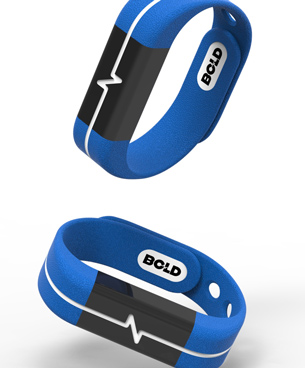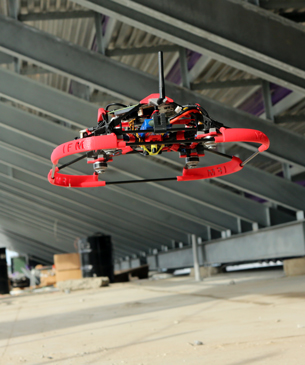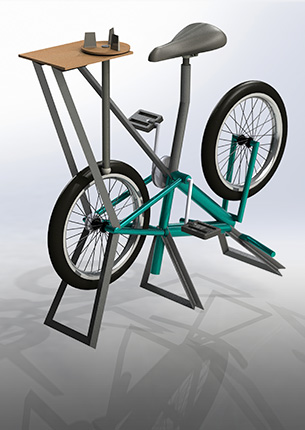HydroTrackNew non-invasive device helps prevent dehydration
An interdisciplinary team of five graduate students collaborated on a design project for a NUvention: Medical course. The challenge: develop a solution to help prevent complications from dehydration in the elderly.
Problem
One of the top ten reasons for hospitalization, dehydration is particularly dangerous for the elderly. As people age, they lose their ability to detect thirst. Seemingly benign symptoms of mild dehydration, such as headaches and dizziness, can cause potentially serious falls. And time in the hospital for something as unavoidable as dehydration can open up patients to risks such as air-borne viruses and deadly bacteria.
Nursing homes are generally understaffed. We wanted to design a tool that allows staff to safely and easily monitor hydration from a distance., HydroTrack, co-creator
Solution
HydroTrack is a wearable device that uses safe electrical signals (called bio-impedance technology) to measure hydration in the body. When a person is dehydrated, the device can buzz or beep to alert the wearer as well as send an alert to the caretaker’s phone.
Benefits
- A comfortable, flexible armband, the device is non-invasive and easy to wear.
- It can detect dehydration before serious issues arise.
- It is safe and durable.
- The electrical unit can be easily removed, so the armband can be washed and reused.
- Caretakers and family members do not have to be present to monitor the user’s hydration levels.
Development Process
 During product development, the team went through several designs before landing on a presentable prototype. An early iteration required electrical gel to be regularly applied to improve accuracy and was impossible to wash or clean without damaging the device. After fixing these issues, the team tested the device on volunteers. They found a strong relationship between total water in the body and the bio-impedance technology. The bio-impedance increased as hydration decreased, due to slow dehydration.
During product development, the team went through several designs before landing on a presentable prototype. An early iteration required electrical gel to be regularly applied to improve accuracy and was impossible to wash or clean without damaging the device. After fixing these issues, the team tested the device on volunteers. They found a strong relationship between total water in the body and the bio-impedance technology. The bio-impedance increased as hydration decreased, due to slow dehydration.
Current Status
The HydroTrack team plans to conduct more experiments with a large pool of subjects and continuously improve the device’s design with more iterations. When the physical product development is complete, the team will turn its attention to further software development.
Updated May 2016
Co-creatorsHeath Ingram (Pritzker School of Law), Beata Kazimierczak (Kellogg School of Management), David Klein (Feinberg School of Medicine), Shuyao Shi (biomedical engineering), James Patrick Stephens (Pritzker School of Law)




















































